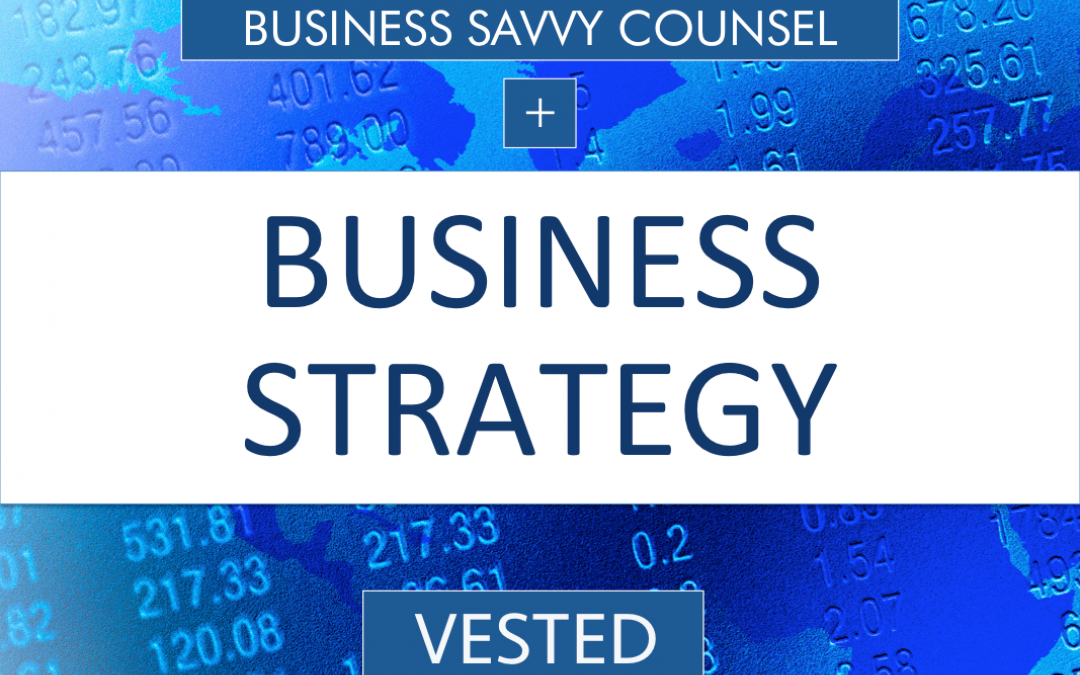By Kat Shoa, A Vested Law Business Ally
…
Over the years, in the role of strategy consultant or interim executive of my client companies, pricing has become one of the key metrics I immediately zoom in on for revenue growth and financial stability. And I’ve managed extreme revenue and profitability improvements by tweaks or complete overhaul of the pricing model.
As you can imagine, your company’s pricing model has a direct impact on your top-line, bottom-line, and your sales volume, and can effectively make or break your company – or make it float around in mediocrity, as is sometimes the case. These metrics apply to linear business models or recurring models equally.
Market-based vs. cost-based pricing. Amazingly, some companies still base their pricing model on their cost. However, whether a product costs you $100 or $1,000, if the market pays $800 for it, that’s where you should price it. Otherwise you’re either leaving money on the table or pricing yourself out. If you can’t make the desired margins, you need to create value, change your target market, or change your offering.
Creating value. The market pays for value, and the best way to create value is through proper positioning and accelerated innovation. Every target demographic needs to be considered in creating their corresponding positioning. Whether it’s the ‘cool’ factor, functionality, reliability, time-savings, cost-savings, or otherwise, clearly communicate the value to each set of your demographics with tactful positioning. And without continued innovation, value eventually wears off. As an example, Apple is a company that has consistently performed a great job at creating real value (innovative products) and perceived value (cool factor), however, recently, they are beginning to lose both, resulting in a hit to their stock price.
Competition. It shouldn’t be a surprise that if there’s little competition in your market, you can charge higher for your products and services. Your market needs to be continually monitored for new competition, and if your market finally does get targeted by competition, continued value creation will help you edge ahead of them.
Price wars. Alternatively, in markets with high competition, it’s easy to fall into the price war trap. This is typical in commoditized markets, or those in which innovation has worn off. Price wars work only if you know you can eliminate or significantly weaken the competition, or if you’re attracting customers for higher margin products or services. Sometimes it’s not worth staying in a market with continual price wars. IBM famously got out of the PC business for this reason.
Growth markets vs. established markets. The general rule is that growth markets afford higher prices. Market excitement, lack of competition, and the general “first to anything” mentality with growth markets allows for higher prices. Don’t be afraid to use this to your advantage. Eventually, with additional players and sizzle fatigue, prices will go lower.
If in doubt, start high. If you’ve been in the business long enough, you probably have a pretty good idea of the price the market will bear, but in new verticals, this can get tricky, and sometimes it becomes difficult to figure out a good pricing model. When in doubt, start high. The market will quickly let you know if you’re overpriced and you can always lower your prices, but increasing your prices will be much more difficult. I had a client who licensed testing tools in a specific vertical and they had started to target a new vertical. Their idea was to price the tools at the same price. With some market analysis, we managed to raise the bottom of their pricing to 3 times their typical price, translating to extreme revenue and margin increases in their new vertical.
The market talks back – only if your price is too high. As I mentioned, the market will quickly let you know if you’re overpriced. Here’s the trick, it will hardly ever tell you if you’re under-priced. You could be happy selling high volumes of your products not realizing that you’re leaving, for example, 20% on the table. How about implementing a better pricing model that will increase your top-line by 20%, or add 50% to your net margin?
Life-cycle pricing. This topic deserves its own article, but it’s important to keep an eye on the market as the product or service grows, picks up momentum, and nears its “end of life”. The product or service needs to be actively re-priced throughout its life-cycle from launch, mid-life, to end-life. For example, production costs or support/maintenance costs could be much higher for older products or services, causing the margins to deteriorate with lowered pricing. Continual business analysis can bring this to light in order to shelf older products and services, and charge more for newer ones.
Have no fear. Lastly, don’t be afraid to charge higher for your products and services. I don’t know how many clients I’ve had freaking out on me thinking they’d lose all their customers if we raise the prices. No, the customers didn’t go anywhere, and in many cases, they were expecting price increases for a long time before it happened.

